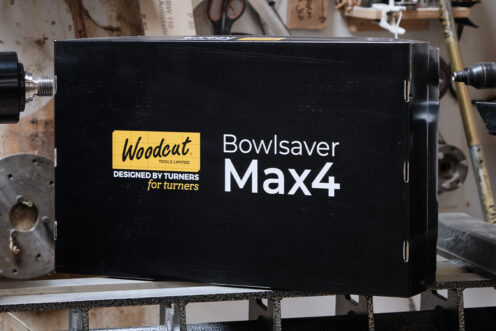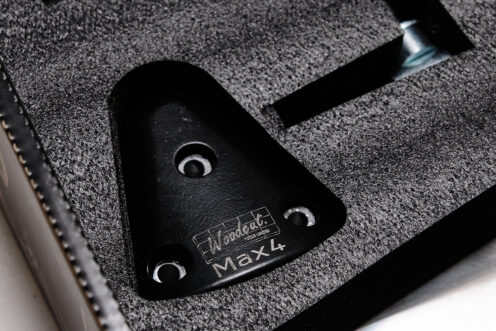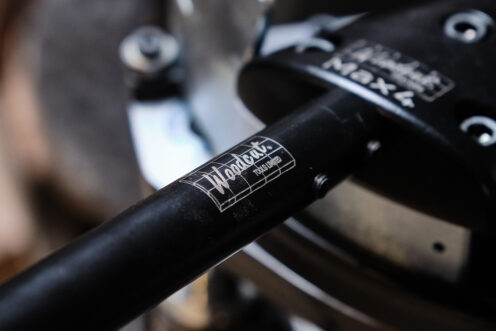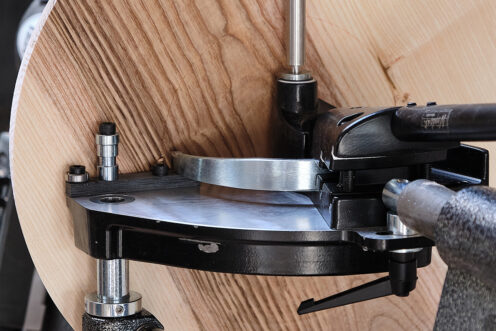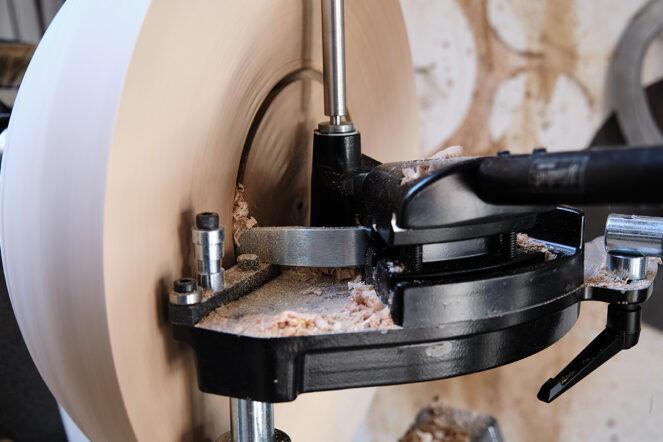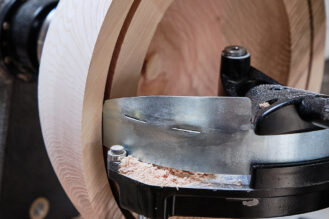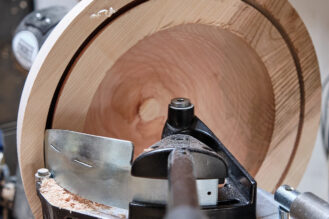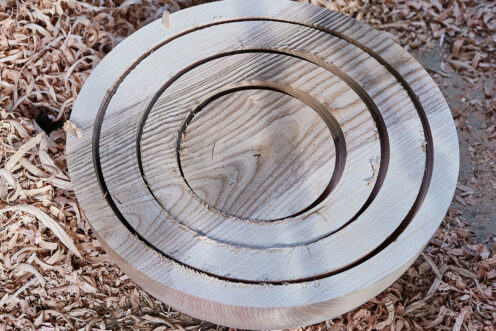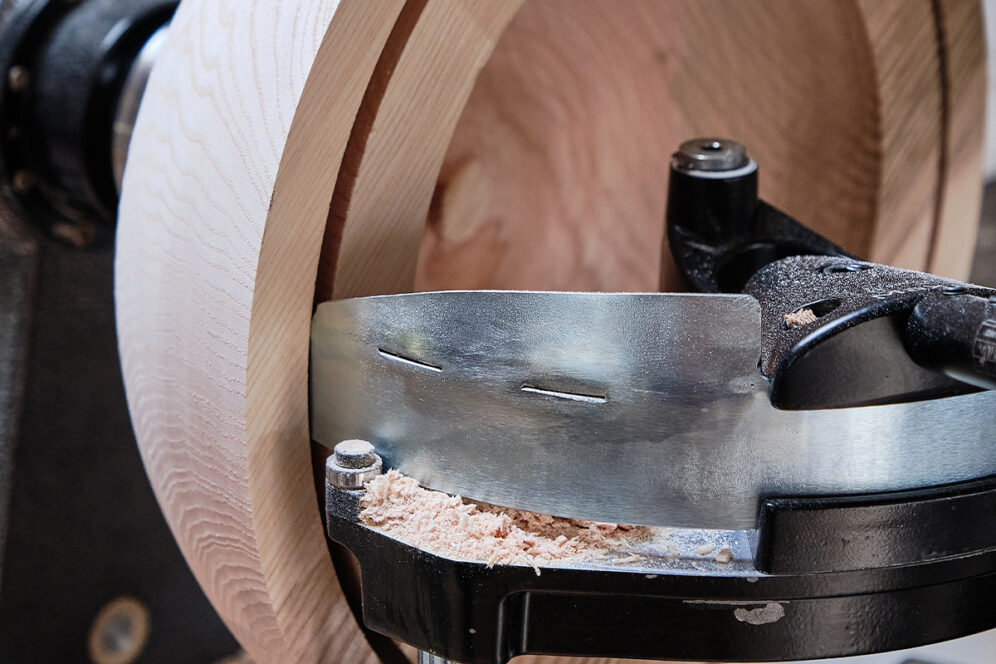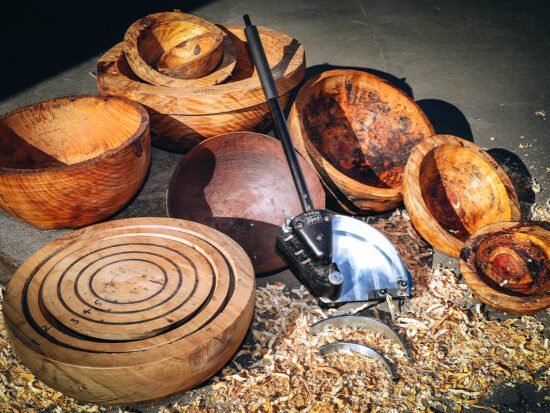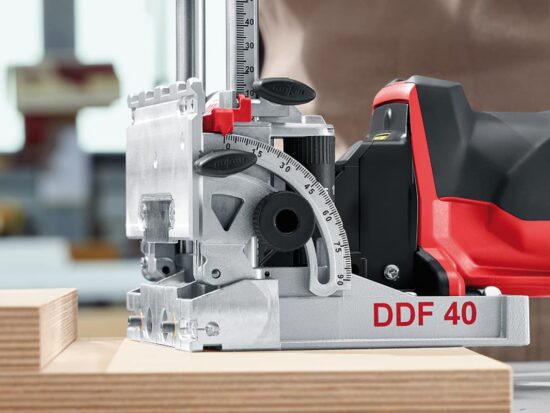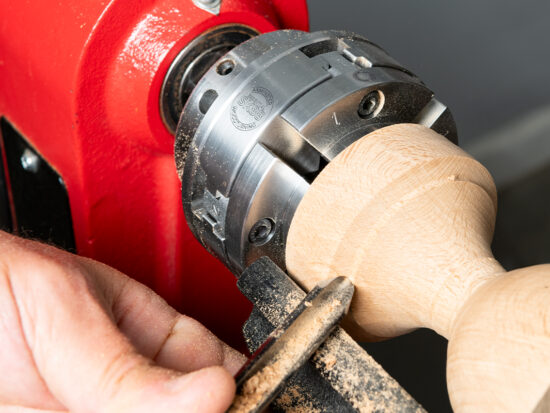Woodcut Tools Max4 Bowlsaver Review by Max Bainbridge

Forest and Found's Max Bainbridge joins us again, this time to review the Max4 Bowlsaver from Woodcut Tools. He puts the revolutionary bowl coring system to the test, looking at its latest advancements over its predecessor, the Max3, whilst also revealing what he likes most about it.
Max is back to review the Max4
Having previously reviewed the Max3 Bowlsaver by Woodcut Tools for Axminster Tools a few years ago, I was quite keen to try the new updated Max4. I don’t often turn a lot of conventional bowls, but when I do it tends to be from really special pieces of timber and I always try to save the centres to maximise the material.
The arrival
On receiving the new Max4 I could see straight away that there had been some big improvements over its predecessor.
Starting with the initial unboxing, it arrives in a large foam lined box, with individual component cut-outs. Whilst making sure that nothing is damaged in transit, this also ensures the lifespan of the tool as it can be easily disassembled when not in use and kept safe in the original box.
The two main areas of improvement that were obvious to see, were the length of the handle and the head unit that holds the cutters. Both are well finished and have a reassuringly solid feel to them.
Setting up
The set-up was straight forward and the instructions that come with it are clear and easy to follow, with useful links to YouTube videos for further information and examples.
There were some other new elements that I also liked which were not included with the Max3. The addition of the threaded rod to add extra support through the tailstock and the laser pointer to identify the position of the cutter. I found that these gave me the confidence to make thinner bowl blanks; which maximises the material without the worry of the cutter going through the side wall or bottom of the bowl.
The project in hand
For this review I am working on a 20 inch ash bowl blank, on the Robust American Beauty lathe. I used all three cutters supplied to produce a set of four nesting bowls. After turning the outside of the largest bowl and securing it in the chuck with appropriate sized jaws for the larger diameter, I used the smallest cutter to core out the very centre of the piece. I was happy to see that the cutters were razor sharp and ready to use straight out of the box, and in a very short space of time I have the first smallest bowl in the set saved.
Being able to switch out the cutters with everything still assembled and in place is really useful and saves quite a bit of time. I could just loosen the screws holding the smallest cutter in place, remove it, and replace it with the next size up. Then you just lock it back down and I was onto coring out the next bowl blank. I could then repeat this process working my way up through the cutters.
The cutters worked extremely well and there was very little effort involved in making the cuts. The shavings didn’t bind the cutter at any point and having the longer more substantial handle offered much more control and a level of confidence when making the cuts. Having the handle connect to the cutter head is this way also makes for a smoother action when in operation. You can feel where the cutter is making contact which makes it more intuitive as to the amount of pressure you need to apply.
Improved cutter guides
The cutter guides also seem to have been improved. The cutter no longer has to ‘step’ over the guide mount to engage the surface of the wood as it had to with the Max3. This gives a much smoother transition when starting the initial cut with no juddering and minimises the chance of getting a catch.
I had my air compressor to hand to clear out any wood chip and fine dust from inside the cut, but I didn’t need it. The cutter does a great job of removing the wood chip and keeping the area free of waste material, making for efficient work flow.
To conclude...
To sum up my experience using the Bowl Saver Max4, I would say that there have been a few key improvements over the previous model that have made a big difference. The overall user experience has been greatly improved and changes in the design and operation have definitely made me consider it to be a piece of equipment that I will be using a lot more in my workshop. Yes, it requires a few minutes to set up and fine tune, but once you have, it is easy to operate, accurate and precise. I can see it being a great addition to any wood turning workshop, whether you are working on a one-off special piece of timber or production bowl turning. It offers great versatility and the addition of the laser pointer and ready-made sizing guides really elevates the potential you have to maximise your material.
Forest & Found - the artist's behind the name
Forest and Found are a UK based partnership between artists Max Bainbridge and Abigail Booth. They share a studio space, used for material experimentation and collaboration; as well as having a platform to pursue their art practices. They exhibit their work throughout the UK and internationally, in both visual arts and contemporary craft.
Bainbridge’s sculptural works carved from wood, reflect a need to create tangible and grounded presence though the physicality of the sculpted object in space. Bainbridge seeks out wood that has fallen where it once grew, forming direct connections to land and place through his recognition of the tree as a being. He takes the natural shape and character of the tree itself and responds to it, to inform his sculptural decision making.



